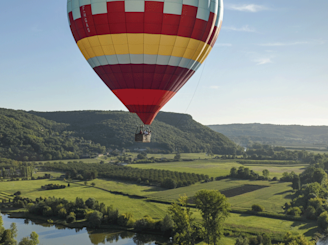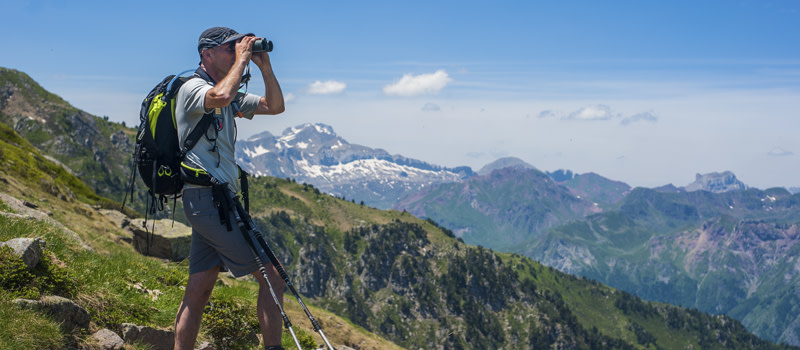Not much noise, not much stirring and no-one around. The sector of Larry, nestling deep in the valley on the border with Spain, is an unspoilt natural scenescape unlike any other. A condensed version of everything that makes the Pyrénées National Park what it is: its mountain pasture area, occupied from June to October, and its protected area, a wealth of biodiversity which includes rock ptarmigans on the ridges, western capercaillies on the Gouetsoule Pass, desmans close by the stream, ermines and grey partridges.
Aspe Valley is also home to an immense population of Pyrenean chamois with over a thousand individual animals on seven thousand hectares. Otters have made a comeback in recent years, Alpine ibex goats should be reintroduced soon and the Valley’s varied habitat is favourable for raptors. There are at least four couples of bearded vultures, fourteen couples of Egyptian vultures and just as many snake eagles, eagles and peregrines.
Off the beaten track
Far from the maddening tourist-season crowd, the route which climbs up to the Larry plateau begins with the track from the Gouetsoule Refuge. Until you reach the eponymous mountain pass, you cross through fields strewn with asphodel and great yellow gentian, creating a mix of yellow and white on an intense green carpet, as the vegetation is amazingly luxuriant: it rains more here than in Brittany, as Aspe Valley is the first of the whole range to stop oceanic perturbations.
Higher up, mountain pines take over, spread out among rhododendrons. The area is as bucolic as you could possibly wish for and the view over Couecq Mountain is an incredible geological treasure.
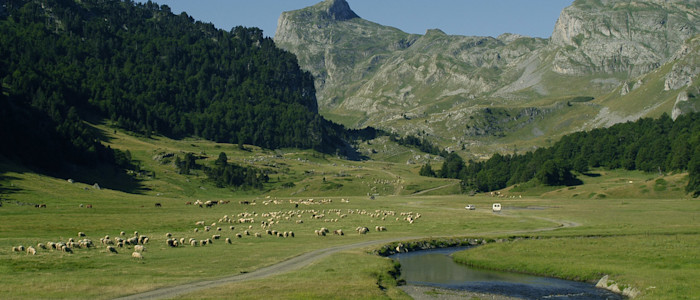
The little refuge on the prairie
A short walk from a summer-occupied shepherd’s hut, the Larry Refuge is unguarded. Yet it is wonderfully comfortable: bunk beds, partitions on the upper floor, gas and a stove. The perfect place for a night in the mountains far from city hustle and bustle. Higher up still, the route crosses through pastures up to the Ayous Pass and its breathtaking view over the Pic du Midi d’Ossau.
You have two options now, you can climb the Pic d’Ayous on one side or the Pic de Larry on the other, which is less travelled. You may also head down via the Refuge d’Ayous to the Ayous Lakes, then on to Bious-Artigues, which means you need to have a vehicle waiting at the bottom. Whichever route you choose, count six to seven hours’ walk in all.
AND ALSO...
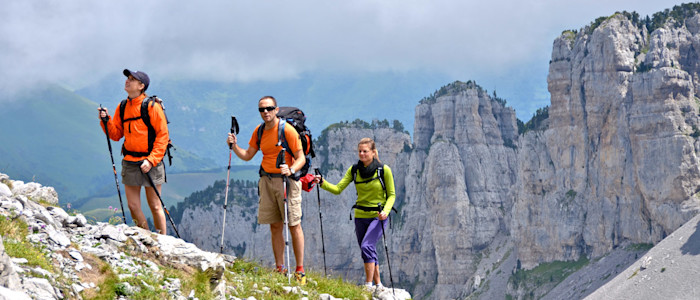
The Orgues de Camplong
A balcony trail by the border, between the mountain pasture area and the karst plateau. The route begins at the Labérouat Refuge, above Lescun. Head for the Braca d’Azun woods and continue climbing the scree slope until you reach the bottom of the Orgues. Continue along the cliff edge for 3 km. Climb up the Pic des Tourelles and continue along the ridge until you reach the Pas d’Azuns. From there, head down southwards towards the refuge at Cap de la Baitch then join the GR10 upwards.
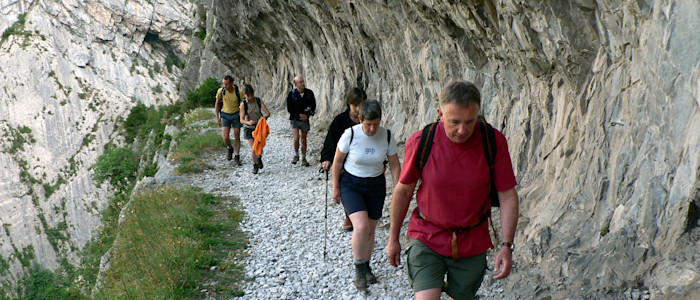
Banasse mountain pastures
An easy trek at the heart of pastoral scenescapes. Start out from the hamlet of Lamourane, at 4 km from Baralet hydroelectric plant. The trail climbs the left bank of the mountain stream. At the foot of Banasse Mountain, head towards the back of the plateau towards the Gourgue Sec, Lurbe and Caillaous huts. The first sits facing a small lake, perfect for enjoying a picnic. You may carry on to Arlet Refuge, about an hour’s walk.
Pic de Sesques
Its nickname, Escarpu, which means steep, was not chosen by accident! Count some 2,000 metres height difference when you set out from Etsaut. It is probably one of the most difficult mid-mountain climbs in the Pyrénées and only experienced trekkers can do it in a day. Climb up through the woods to the Cirque de Yèse, which is halfway, then continue towards the East, then the North until you reach the summit.

